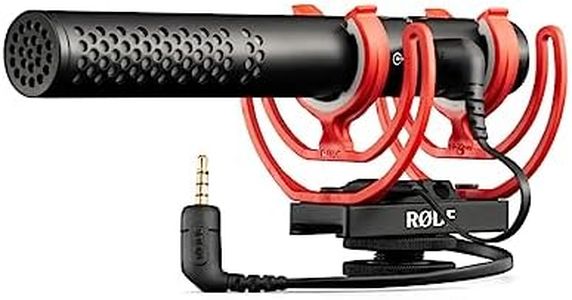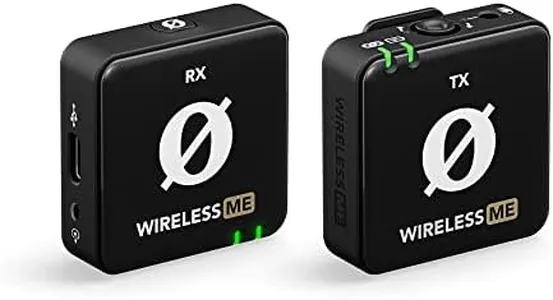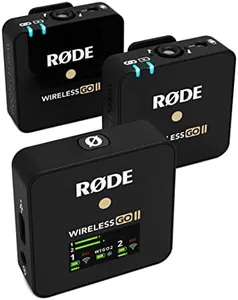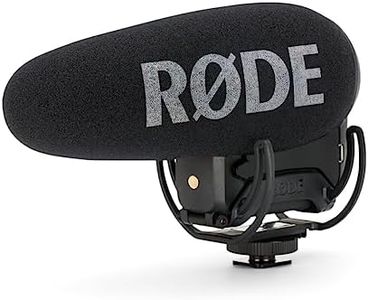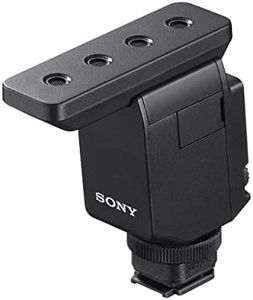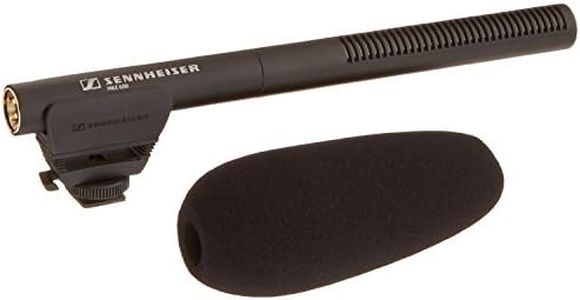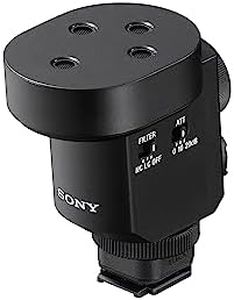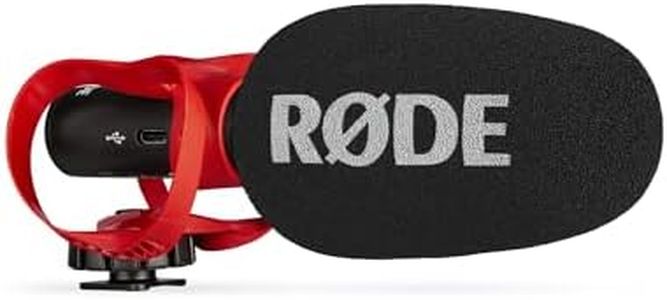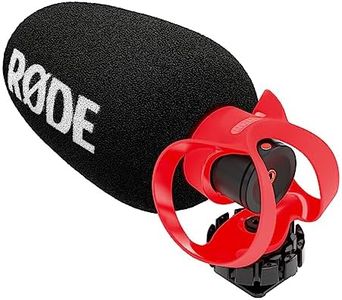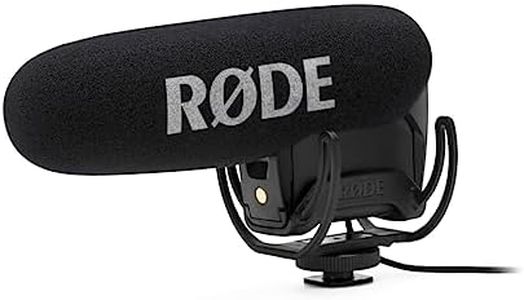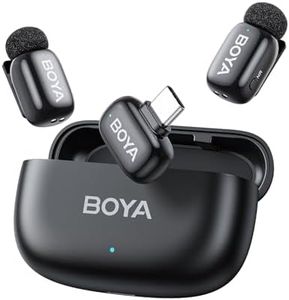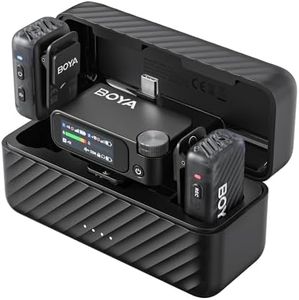We Use CookiesWe use cookies to enhance the security, performance,
functionality and for analytical and promotional activities. By continuing to browse this site you
are agreeing to our privacy policy
10 Best Camera Microphones
From leading brands and best sellers available on the web.Buying Guide for the Best Camera Microphones
Choosing the right camera microphone is essential for achieving clear, professional sound in your video recordings. Your ideal microphone will depend on where and what you typically record, how you plan to use your audio, and the environment where shooting takes place. Understanding the basic types and features will help you select a microphone that matches your recording style and needs.Microphone TypeThe main types of camera microphones are shotgun, lavalier (clip-on), and handheld. Shotgun microphones are highly directional and pick up sound mainly from what they’re pointed at, making them great for filming interviews or subjects at a distance in noisy environments. Lavalier microphones clip onto clothing and are best for capturing speech directly from the person, particularly when movement is involved or a discreet setup is needed. Handheld microphones are commonly used for on-the-go interviews and reporting. To decide, consider the typical distance and mobility of your subjects—shotgun for stationary or wider shots, lavalier for mobility and hands-free use, and handheld for quick setups with visible microphones.
Directionality (Polar Pattern)Directionality refers to how sensitive the microphone is to sound from different directions. Common patterns are cardioid (captures sound mainly from the front), supercardioid/hypercardioid (even more focused front pickup with some side or rear sensitivity), and omnidirectional (captures sound equally from all around). If you need to isolate the speaker’s voice and reduce background noise, a cardioid or shotgun (which are directional) works well. If you want to capture the ambiance or multiple speakers around the mic, an omnidirectional mic is better. Your typical recording environment (noisy vs. quiet) and whether you have more than one audio source will guide your choice here.
ConnectivityMicrophones can connect to your camera or recording device via wired (usually 3.5mm or XLR connectors) or wireless systems (transmitter and receiver). Wired connections tend to be reliable and usually require less setup, making them suitable for fixed setups and when mobility isn’t a big concern. Wireless systems provide much greater freedom of movement, ideal for on-the-go shooting or interviews where cables would be a hassle, but they require attention to battery and potential interference. Think about your typical shooting conditions and whether you need the freedom to move around when choosing the connectivity type.
Power RequirementsSome microphones are powered by batteries, others might draw 'plug-in power' from the camera, and professional ones might need 'phantom power' provided via XLR inputs. Battery-powered microphones can be used with most cameras and are portable, but you need to keep spare batteries. Plug-in power mics work with compatible cameras but check your device if it can supply power. Phantom-powered microphones are more for professional setups. Consider how you will power the microphone on your shoots, and make sure your camera or recorder matches the microphone's power needs.
Size and MountingThe physical size of the microphone and how it's mounted to your camera or person can affect your shooting experience. Larger shotgun mics may need a dedicated mount or shock absorber, while lavaliers are tiny and unobtrusive. Some mics have built-in camera mounts ('hot shoe'), while others may need harnesses or clips. Choose based on portability, where you'll position the mic, and how visible or inconspicuous you want it. If you need to stay lightweight and mobile, a compact mic is better; for stationary, controlled environments, size is less of an issue.
Sensitivity and Frequency ResponseSensitivity describes how well a microphone picks up quiet sounds, while frequency response relates to the range of sounds (from low to high pitches) it can capture accurately. High sensitivity is useful if you record subjects from a distance or in quieter settings, but in loud environments, you might want a mic with lower sensitivity to avoid distortion. A wide, flat frequency response is best for general, natural-sounding audio; if you’re capturing mainly voices, look for microphones tuned to the range of human speech. Match these specs to what you’re typically recording and the distance from your subject.

